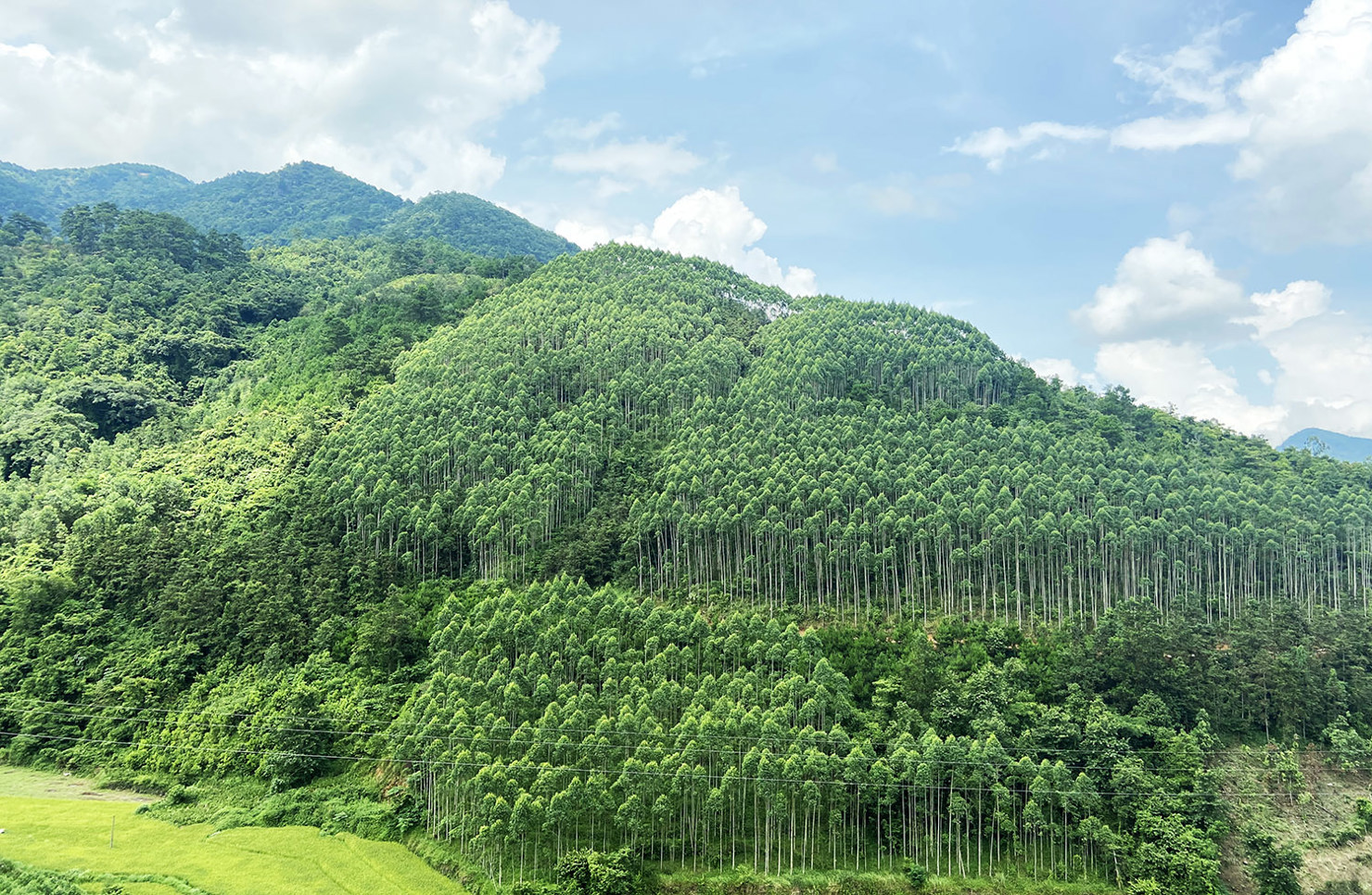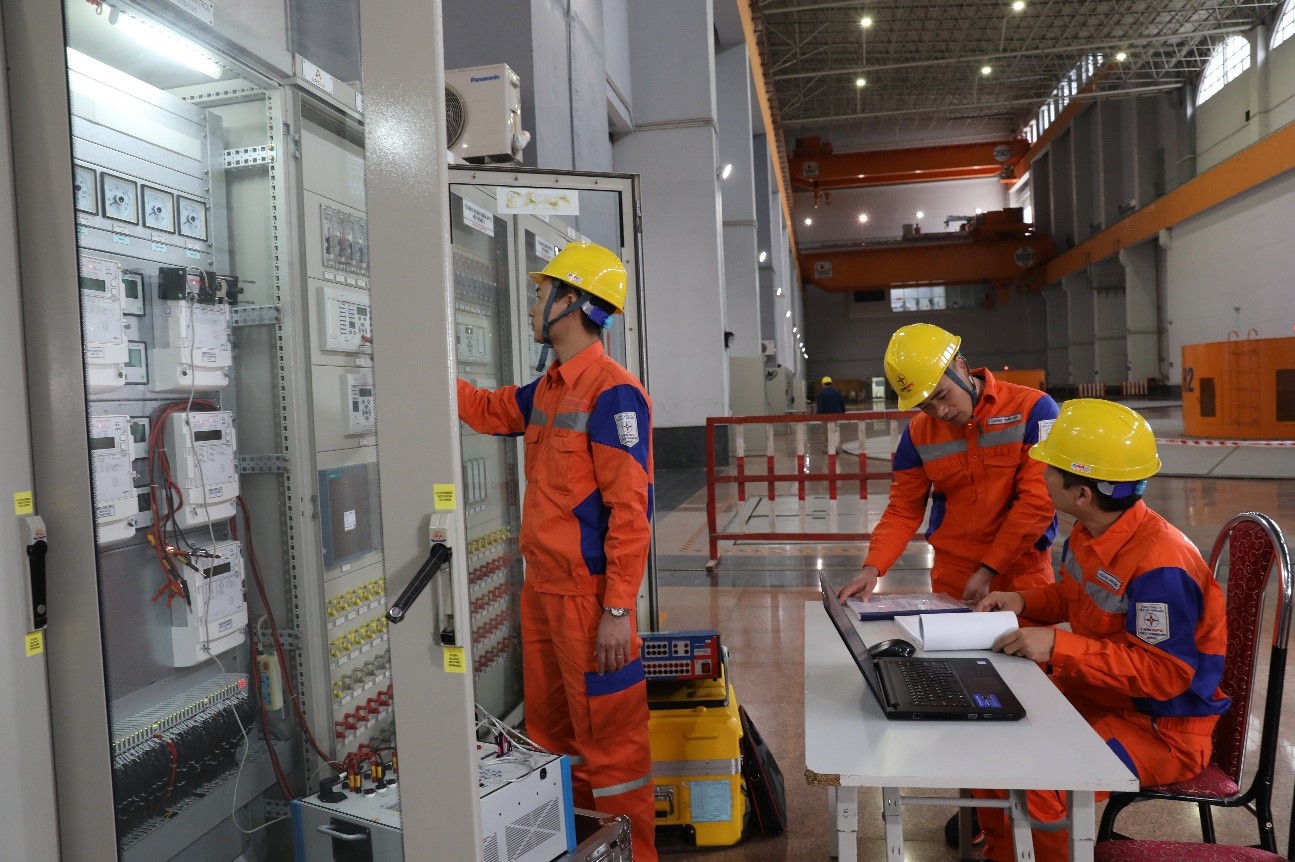Orientation on the National forestry planning in Vietnam until 2030
The article below will provide detailed information about the orientation on the National forestry planning in Vietnam until 2030

Orientation on the National forestry planning in Vietnam until 2030 (Internet image)
On August 24, 2024, the Prime Minister of the Government of Vietnam issued Decision 895/QD-TTg approving the National Forestry Planning for the period 2021-2030, with a vision to 2050.
Orientation on the National forestry planning in Vietnam until 2030
With the goal of constructing the forestry sector into an economic and technical industry based on the establishment, management, protection, development, and sustainable use of forest resources and forestry land; ensuring widespread and equal participation of organizations and individuals in forestry activities, mobilizing social resources; maximizing the potentials, roles, and values of forests for sustainable development; and increasingly contributing to socio-economic development, environmental protection, conservation of natural resources, biodiversity, and response to climate change.
The national forestry planning orientation until 2030 includes the following:
(1) Regarding forest area and forestry land
The planned forestry land area for the period 2021 - 2030 is 15,848.5 thousand hectares. Of this: the area for special-use forests is 2,454.9 thousand hectares, accounting for 15.5%; the area for protection forests is 5,229.6 thousand hectares, accounting for 33%; the area for production forests is 8,164.0 thousand hectares, accounting for 51.5%. The area covered by forests is 14,696.8 thousand hectares, accounting for 92.7% of the total forestry land area.
(Details in Annex I attached to Decision 895/QD-TTg 2024).
Divided by three types of forests:
- Special-use forest land and forest:
The total area of special-use forest land and forest by 2030 is 2,454.9 thousand hectares, an increase of 126.5 thousand hectares compared to 2020. The area covered by forest is 2,371.5 thousand hectares, accounting for 96.6% of the total special-use forest land area.
The total number of special-use forest areas by 2030 is 225 areas, with a total area of 2,649,523 hectares (including marine components).
(Details in Annex II attached to Decision 895/QD-TTg 2024).
- Protection forest land and forest:
The total area of protection forest land by 2030 is 5,229.6 thousand hectares, a decrease of 282.5 thousand hectares compared to 2020.
The area covered by forest is 4,769.2 thousand hectares, accounting for 91.2% of the total protection forest land area.
- Production forest land and forest:
The total area of production forest land by 2030 is 8,164.0 thousand hectares.
The area covered by forest is 7,556.1 thousand hectares, accounting for 92.6% of the total production forest land area.
(Details in Annex III attached to Decision 895/QD-TTg 2024).
(2) Regarding forestry production development
- Forest protection: The total forest area to be protected over the period 2021 - 2030 is 138,812 thousand hectares (excluding: newly planted forests in the investment phase and natural regeneration areas), averaging 13,881 thousand hectares/year.
- Forest development:
+ Developing forest tree varieties: Enhance scientific research, breeding new varieties with high productivity and quality, indigenous fast-growing tree varieties with high productivity and quality to serve the development of production forests and large timber forests. Ensure an average supply of 575 million trees/year. Strictly manage the source of seed supply, ensuring that the percentage of seeds for reforestation under control reaches at least 95% by 2030. Support the establishment of seed forests, high-tech seed centers based on the forestry seed needs of each region, providing high-quality tree varieties adaptable to climate change. Build 5 to 7 high-tech forestry areas; each area will have a high-tech seed production subdivision with a capacity of about 200 million trees/year;
+ Afforestation: 2,467.2 thousand hectares, including: in the period 2021 - 2025, afforestation of 1,178.4 thousand hectares, averaging 235.7 thousand hectares/year (new planting of 178.4 thousand hectares, averaging 35.7 thousand hectares/year); in the period 2026 - 2030, afforestation of 1,288.8 thousand hectares, averaging 257.8 thousand hectares/year (new planting of 88.8 thousand hectares, averaging 17.8 thousand hectares/year). The area of afforestation of large timber trees by 2030 is expected to reach 1.0 million hectares, including around 700 thousand hectares of new plantations and about 300 thousand hectares of converting small timber forests into large timber forests;
+ Regenerating and promoting reforestation: 934.4 thousand hectares, averaging 93.4 thousand hectares/year; divided into: the period 2021 - 2025 is 687.2 thousand hectares and the period 2026 - 2030 is 247.2 thousand hectares. The reforested area over the period 2021 - 2030 is 280.9 thousand hectares;
+ Developing scattered planting: in the period 2021 - 2025, planting 690,000 thousand trees, averaging 138,000 thousand trees/year. In the period 2026 - 2030, aiming to achieve 80% of the scattered planting level of the period 2021 - 2025.
- Developing non-timber forest products: Enhance measures to protect and develop valuable non-timber forest species, threatened species; sustainably utilize and harvest non-timber forest products; establish non-timber forest product zones, creating distinctive products for each region compatible with market demand; prioritize the development of products like medicinal herbs, cosmetics, and foods.
- Sustainable forest management and certification: By 2025, the area of forests certified for sustainable management is expected to reach approximately 500 thousand hectares and about 1 million hectares by 2030.
- Harvesting timber from planted forests, scattered forestry trees, home gardens, and liquidated rubber trees: By 2025, the timber harvesting volume is expected to reach 35 million cubic meters and 50 million cubic meters by 2030.
- Processing and trading of timber and forest products: Prioritize the use of modern, automated, and specialized equipment. Encourage the development of technology to create high-quality, value-added products. Develop high-quality human resources through content innovation in training programs, aligning training with practical needs; training based on enterprise orders and demands. Prioritize state budget for investment, upgrading facilities for training institutions. Prioritize the development of wood trading centers in high-tech forestry areas; establish one international wood product trading center; develop programs and plans for trade promotion and market development.
- Developing forestry infrastructure:
+ Maintain the existing forestry road network and open about 6,000 km of new forestry roads, including: approximately 3,000 km in the Northern midland and mountainous region; 100 km in the Red River Delta; 1,100 km in North Central Coast and Central Coast; 1,000 km in Central Highlands; 500 km in Southeast region; 300 km in Mekong Delta;
+ Develop infrastructural projects: Construct and ensure stable operation of the office headquarters of about 400 special-use forest management boards and protection forest management boards; build about 350 new forest protection stations and ranger stations, about 5,400 km of firebreaks in special-use, protection forests, and other infrastructural works for forest management, protection, and development.
- Developing forest environmental services:
Continue to implement current forest environmental services; research and expand types and subjects paying for forest environmental services, such as:
+ Maintain forest environmental service revenue for water regulation services for hydropower projects, domestic water, and industrial water;
+ Research and expand types of services and subjects paying for forest environmental services such as carbon sequestration and storage services of forests, ecotourism, leisure, recreation, and aquaculture services...
- Develop ecotourism associated with forest protection and development:
Review, research, and improve the current mechanism and policies to facilitate the development of ecotourism in forest areas associated with the conservation and promotion of local community cultural identities; mobilize social resources in developing ecotourism associated with forest protection and development.
- Organize the allocation of land, forest allocation to organizations, households, individuals, and community residents. The area of 3,744.6 thousand hectares includes: land with forest cover is 2,890.1 thousand hectares, and land without forest cover is 854.5 thousand hectares.
(Details in Annex IV attached to Decision 895/QD-TTg 2024).
(3) Forestry development orientation by region
- Northern midland and mountainous region: The total area of forests and forestry land planned for the period 2021 - 2030 is 6,065.1 thousand hectares, including: 572.4 thousand hectares of special-use forest land; 2,220.9 thousand hectares of protection forest land and 3,258.2 thousand hectares of production forest land. The forest cover rate will reach 55.4% by 2030.
- Red River Delta: The total area of forests and forestry land planned for the period 2021 - 2030 is 491.8 thousand hectares, including 104.2 thousand hectares of special-use forest land; 141.5 thousand hectares of protection forest land and 246.1 thousand hectares of production forest land. The forest cover rate will reach 20.6% by 2030.
- North Central Coast and Central Coast: The total area of forests and forestry land planned for the period 2021 - 2030 is 5,819.2 thousand hectares, including 983.7 thousand hectares of special-use forest land; 2,048.6 thousand hectares of protection forest land and 2,786.8 thousand hectares of production forest land. The forest cover rate will reach 54.6% by 2030.
- Central Highlands: The total area of forests and forestry land planned for the period 2021 - 2030 is 2,730.4 thousand hectares, including 524.7 thousand hectares of special-use forest land; 579.3 thousand hectares of protection forest land and 1,626.4 thousand hectares of production forest land. The forest cover rate will reach 46.7% by 2030.
- Southeast region: The total area of forests and forestry land planned for the period 2021 - 2030 is 464.9 thousand hectares, including 194.4 thousand hectares of special-use forest land; 151.0 thousand hectares of protection forest land and 119.5 thousand hectares of production forest land. The forest cover rate will reach 18.9% by 2030.
- Mekong Delta: The total area of forests and forestry land planned for the period 2021 - 2030 is 290.7 thousand hectares, including 75.5 thousand hectares of special-use forest land; 88.2 thousand hectares of protection forest land and 127.0 thousand hectares of production forest land. The forest cover rate will reach 5.6% by 2030.
(Details in Annex V attached to Decision 895/QD-TTg 2024).
- Key word:
- forestry planning
- forestry
- Vietnam
- Guidelines for maintenance and renovation of villas in Ho Chi Minh City
- Guidelines for maintenance and renovation of villas in Ho Chi Minh City
- Resolution 190: Principles for addressing certain issues related to the organization and arrangement of state apparatus in Vietnam
- Guidance on identifying cases of inaccurate or non-operational electricity meters in Vietnam
- Official Telegram 16: Urgent requirement to allocate the entire state budget investment plan in 2025 in Vietnam
- Prime Minister of Vietnam directs to accelerate allocation and disbursement of public investment capital in 2025 in Vietnam
-

- Procedures for high school admission in Vietnam
- 14:25, 21/02/2025
-

- Resolution 190: Principles for addressing certain ...
- 11:30, 21/02/2025
-

- Guidance on identifying cases of inaccurate or ...
- 11:00, 21/02/2025
-

- Official Telegram 16: Urgent requirement to allocate ...
- 08:00, 21/02/2025
-

- Circular 04/2025 stipulating on the quality assessment ...
- 18:41, 20/02/2025
-

- Guidelines for maintenance and renovation of villas ...
- 14:30, 21/02/2025
-

- Guidelines for maintenance and renovation of villas ...
- 14:30, 21/02/2025
-

- Procedures for high school admission in Vietnam
- 14:25, 21/02/2025
-

- Resolution 190: Principles for addressing certain ...
- 11:30, 21/02/2025
-

- Guidance on identifying cases of inaccurate or ...
- 11:00, 21/02/2025

 Article table of contents
Article table of contents
